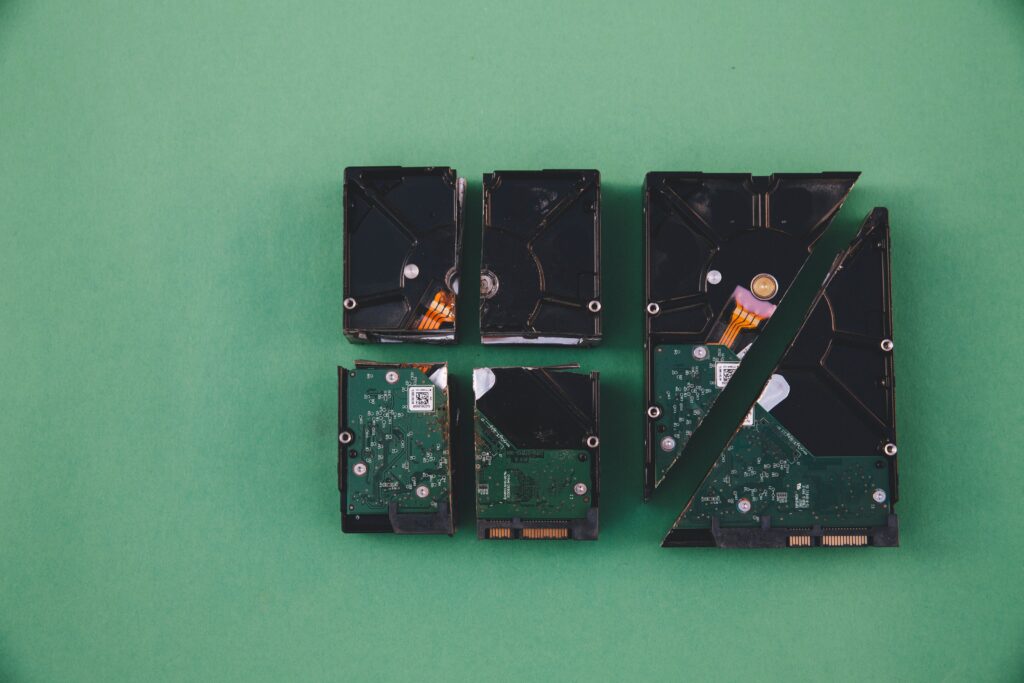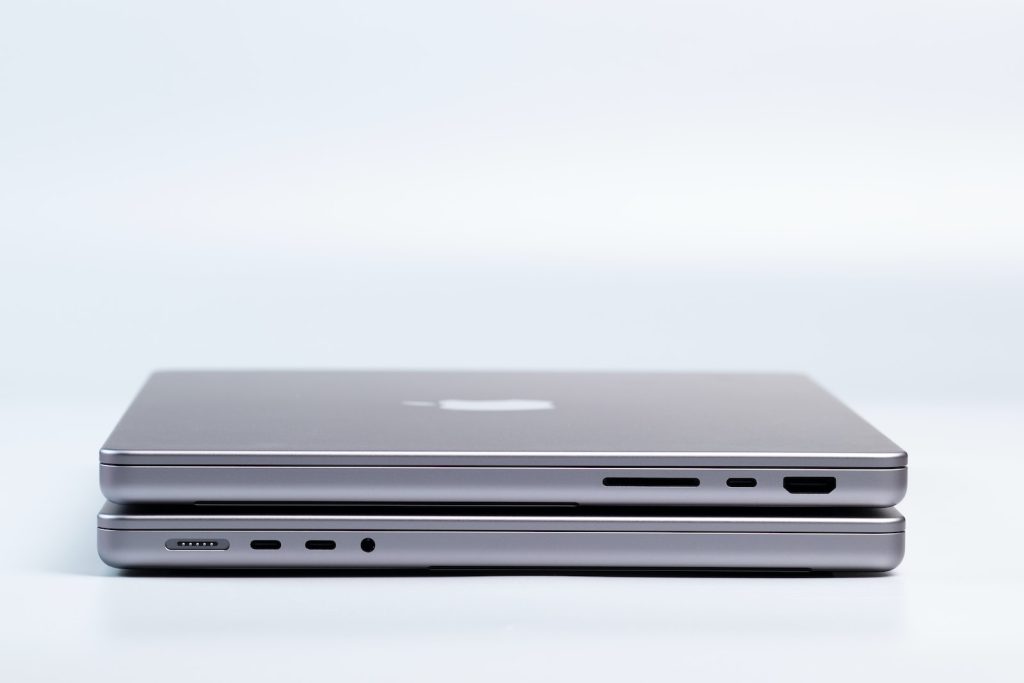This website may contain affiliate links, which means I may receive a commission if you click on a link and make a purchase. While clicking on these links won't cost you any extra money, they will help me keep this site up and running. Your support is appreciated!

Hey there, tech-savvy amigos! So, you’ve decided to dive into the world of programming, and now you need the perfect sidekick – a reliable laptop. But wait, not just any laptop will do! You need a sleek, lightning-fast, code-crunching beast that will make your programming dreams come true.
Fear not, pals! I’m here to be your guiding light through the labyrinth of laptop options. Let’s embark on a whimsical journey to demystify the art of how to choose a laptop for programming. Buckle up, for we are about to unravel the magical secrets of laptops designed to make programming a breeze.
So, grab a cup of your favorite Java (the programming language, not the coffee… or both, no judgment here!) and let’s get this laptop quest rolling!
Table of Contents
- Understanding Processor Power and Speed
- The Importance of RAM for Coding
- Choosing the Right Screen Size and Resolution
- Storage Options: SSD vs HDD
- Graphics Card Considerations for Programming
- Battery Life and Portability for Coding on-the-go
- Keyboard Quality and Ergonomics for Long Coding Sessions
- Connectivity and Ports for Peripherals
- Operating System: Windows, macOS, or Linux?
- Budget-Friendly Options without Compromising Performance
- Questions and Answers for How to Choose a Laptop for Programming
- What are the essential specifications for a programming laptop?
- Should I prioritize portability or performance in a programming laptop?
- Do I need a dedicated graphics card for programming?
- What type of display is ideal for programming?
- Should I prioritize battery life when choosing a programming laptop?
- Is a backlit keyboard necessary for programming?
- How important is the build quality in a programming laptop?
- What are the best operating systems for programming?
- Should I consider a laptop with upgradeable components for programming?
- How important is the port selection in a programming laptop?
Understanding Processor Power and Speed
When it comes to choosing a laptop for programming, understanding processor power and speed is essential for ensuring a smooth and efficient development experience. The processor, often referred to as the brain of the computer, directly impacts the laptop’s ability to handle complex coding tasks and multitasking. Choosing the right processor can significantly enhance the overall performance of the laptop for programming.
First and foremost, consider the following key factors when evaluating processor power and speed for a laptop for programming:
- Clock Speed: This refers to the number of calculations a processor can execute per second, measured in GHz. A higher clock speed generally indicates faster performance.
- Number of Cores: Processors with multiple cores can handle multiple tasks simultaneously, which is particularly beneficial for running complex programs and virtual machines.
- Cache Size: A larger cache enables the processor to access frequently used data quickly, enhancing overall speed and responsiveness.
In the realm of laptop processors, Intel and AMD are the leading players, each offering various models tailored to different usage scenarios. For programming, Intel’s Core i7 and AMD’s Ryzen 7 processors are highly recommended due to their robust performance and multitasking capabilities. These processors are well-suited for compiling code, running virtual environments, and handling resource-intensive development tools, making them ideal choices for a laptop for programming.
For example, the Intel Core i7-1165G7 processor offers a balance of power efficiency and high performance, making it a compelling choice for programming tasks. Similarly, the AMD Ryzen 7 4800H processor provides excellent multi-core performance, catering to the demands of programming and development. When choosing a laptop for programming, opting for a model equipped with one of these processors ensures a seamless and efficient coding experience.
The Importance of RAM for Coding

RAM is like the secret sauce that makes your Laptop for Programming run smoothly and efficiently. For coding, having enough RAM is crucial for juggling all those open tabs, multiple applications, and hefty development environments, without your laptop breaking a sweat. Imagine running a marathon with a water bottle – you could make it, but it won’t be pretty. That’s why RAM plays a vital role in creating a smooth and seamless coding experience. When choosing a laptop for programming, here’s why paying attention to RAM size is a game-changer:
- Multitasking Marvel: Coding often requires running resource-intensive programs simultaneously, like IDEs, compilers, and web browsers. A higher RAM capacity ensures that your laptop can handle all of these tasks without slowing down or freezing, allowing you to seamlessly switch between applications and keep your coding flow uninterrupted.
- Future-Proofing Power: As a programmer, it’s essential to future-proof your equipment. Opting for a laptop with ample RAM means you can handle the demands of more complex projects and technologies down the line. Investing in sufficient RAM now can save you from the hassle of upgrades or replacements in the near future, allowing your laptop to grow alongside your coding skills.
When it comes to RAM, the sweet spot for a Laptop for Programming is generally 8GB to 16GB. Brands like Dell and Lenovo offer powerful laptops with customizable RAM options, where you can choose the right amount according to your coding needs. One highly recommended laptop to consider is the Dell XPS 15, which can be configured with up to 64GB of RAM. This powerhouse not only handles coding tasks with ease but also provides ample room for your projects to grow. With a sleek design and robust performance, the Dell XPS 15 is a top choice for programmers who value both style and substance in their coding companion.
Choosing the Right Screen Size and Resolution
Choosing the right screen size and resolution for your laptop is crucial, especially when it comes to using it for programming. The size and resolution can greatly impact your coding experience, so it’s essential to make an informed decision. When selecting a laptop for programming, keep the following points in mind:
Consider the Screen Size:
When it comes to programming, having the right amount of screen real estate can make all the difference. Here are some considerations for choosing the ideal screen size for your programming needs:
- 13-14 inches: A compact and portable option, ideal for on-the-go coding sessions and working in tight spaces.
- 15-16 inches: Offers a good balance between portability and screen real estate, providing ample space for coding while still being relatively easy to carry around.
- 17 inches and above: If you prefer a larger display for multitasking or working on complex projects, a larger screen size may be more suitable.
Understanding Resolution:
Aside from size, the resolution of the screen is equally important for programming tasks. A higher resolution means more pixels, which translates to better clarity and visual fidelity. Here’s a breakdown of common resolutions and their implications:
- Full HD (1920×1080): A standard resolution that provides crisp visuals and is suitable for most programming tasks.
- Quad HD (2560×1440) and 4K (3840×2160): Ideal for developers who work with graphics, video, or require high precision in their coding environment.
When it comes to purchasing a laptop for programming, the screen size and resolution largely depend on personal preferences and specific work requirements. However, for a versatile combination of portability and ample screen space, the Dell XPS 15 stands out with its 15.6-inch screen and stunning 4K resolution. The vibrant display and high pixel density make it a top choice for programming tasks that demand precision and visual clarity.
Storage Options: SSD vs HDD

When it comes to choosing the right storage option for your Laptop for Programming, you’ll need to consider the differences between SSD and HDD. Let’s dig into the pros and cons of each to help you make an informed decision.
SSD (Solid State Drive):
If you’re looking for speed and durability, SSD is the way to go. With no moving parts, SSDs offer faster boot times and data access, making them ideal for programming tasks. They are also more robust and resistant to physical shock, perfect for on-the-go developers. While SSDs generally have lower storage capacity compared to HDDs, many programmers prioritize speed and reliability over space.
HDD (Hard Disk Drive):
On the other hand, if you require a larger storage capacity at a lower cost, an HDD might be the better option for your Laptop for Programming. HDDs are great for storing large files and applications, making them suitable for developers working with sizable projects. However, they are slower than SSDs due to their spinning disk mechanism, which might lead to longer load times for your programming software and files.
Considering Your Needs:
Ultimately, the decision between SSD and HDD boils down to your unique needs as a programmer. If speed and durability are top priorities, investing in an SSD would be beneficial. On the other hand, if you work with large files and need ample storage space without breaking the bank, an HDD might be the better fit for you. Whichever option you choose, ensure it aligns with your programming requirements and budget.
Graphics Card Considerations for Programming
Graphics Card Considerations for Programming
Now, let’s talk about the real powerhouse of any laptop for programming—the graphics card. While coding itself might not demand as much from the graphics card, it’s a different story when it comes to program testing and debugging, especially for those coding in graphics-intensive environments or working with large datasets.
When it comes to programming, here are some graphics card considerations to keep in mind:
- Dedicated vs. Integrated: A dedicated graphics card, such as the NVIDIA GeForce RTX 3060, will be a beast when it comes to handling complex visualizations, machine learning models, or gaming during your well-deserved breaks. On the other hand, integrated graphics can be sufficient for most programming tasks, but if you want that extra oomph in performance, dedicated is the way to go.
- Memory: Look for a card with ample VRAM—something like 6GB or higher, such as the AMD Radeon RX 6700 XT, will ensure smooth performance when dealing with large graphic assets or running multiple virtual machines for testing purposes.
When choosing a laptop for programming, having a solid graphics card can greatly enhance your overall computing experience, whether you’re crunching numbers, tinkering with 3D visualizations, or simply immersing yourself in the latest game titles during some downtime. It’s all about finding that balance between what you need and what you can afford. So don’t be shy to splurge a bit on a laptop with a powerful graphics card—it’s an investment in your programming productivity and enjoyment.
Battery Life and Portability for Coding on-the-go

Battery Life and Portability for Coding on-the-go
Let’s talk about a vital aspect of choosing a laptop for programming – portability and battery life. As a programmer, you’re likely to spend long hours coding, and being tied down by a plug socket can be highly inconvenient. When you’re on-the-go, you definitely want a laptop that can keep up. Here’s everything you need to consider:
Battery Life:
When it comes to programming on-the-go, battery life is non-negotiable. You don’t want to be constantly hunting for a power outlet or tethered to one while you’re coding in a coffee shop or on a train. Look for a laptop with a battery life that can easily last through a full day of work. Ideally, aim for a minimum of 8-10 hours of battery life so you can be productive without interruptions.
Portability:
Portability goes hand in hand with battery life. A lightweight and sleek laptop can make all the difference when you’re shuttling between meetings, co-working spaces, or simply working from your favorite cafe. Consider a laptop that’s slim and easy to carry around. Look for a compact design and durable build that won’t weigh you down. Additionally, a smaller size may also mean a more portable charger, saving you further space and weight in your bag.
When considering a laptop for programming, you want a device that seamlessly combines battery longevity and portability. One standout recommendation is the Dell XPS 13. With its impressive battery life of up to 14 hours, you can code with confidence knowing you won’t be tethered to a power socket. Its lightweight and compact design also make it a dream to carry around, fitting effortlessly into your bag. For the programmer constantly on-the-go, the Dell XPS 13 offers the perfect blend of portability and endurance.
Keyboard Quality and Ergonomics for Long Coding Sessions
When it comes to choosing a laptop for programming, the keyboard quality and ergonomics play a crucial role in ensuring a comfortable and efficient coding experience, especially during those long coding sessions. As a programmer, you likely spend countless hours typing away at your keyboard, which is why finding the right one is essential to avoid strain and maximize productivity.
First things first, look for a laptop with a full-sized, tactile keyboard that provides a satisfying typing experience. The keys should offer good feedback and actuation force, allowing you to type for extended periods without discomfort. Additionally, consider the key travel distance – a deeper key travel can reduce the strain on your fingers and wrists. Opt for keyboards with comfortable wrist rest support to maintain a natural typing position, minimizing the risk of developing carpal tunnel syndrome or other repetitive strain injuries.
In terms of ergonomics, look for laptops with an adjustable keyboard tilt to find the most comfortable typing angle for your wrists. Investing in an external ergonomic keyboard can also be a game-changer, providing a more natural hand position and reducing muscle strain. Ergonomic keyboards often feature split designs, cushioned palm rests, and adjustable tenting to promote a more neutral wrist and forearm alignment. Remember, prioritizing keyboard quality and ergonomics in your laptop for programming decision will not only enhance your coding experience but also contribute to your long-term comfort and well-being.
| Laptop Recommendation | Features | Why Choose |
|---|---|---|
| Dell XPS 15 | Full-sized backlit keyboard with ample key travel and tactile feedback. Ergonomic design with optional external ergonomic keyboard support. | Dell is renowned for its keyboard quality and offers excellent ergonomics, providing a comfortable typing experience for long coding sessions. The XPS 15’s responsive keyboard and ergonomics make it an ideal choice for programming. |
Connectivity and Ports for Peripherals

Connectivity and Ports for Peripherals
Alright, let’s dive into the nitty-gritty of connectivity and ports for peripherals when it comes to finding the perfect laptop for programming. As a programmer, you need to ensure that your laptop has the right ports and connectivity options to seamlessly integrate with various peripherals and devices.
First things first, it’s essential to have a good variety of ports on your laptop. USB-C is a game-changer for programming professionals, allowing for high-speed data transfer and the ability to connect to multiple devices simultaneously. Additionally, having USB-A ports is still crucial for compatibility with older devices, and an HDMI port will come in handy when you need to connect to external displays for that extra screen real estate. Make sure to check for these ports when evaluating your options for a laptop for programming.
Now, let’s talk about Thunderbolt 3. This technology is a powerhouse for fast data transfer, connecting to high-resolution displays, and even daisy-chaining multiple devices. Look for laptops with Thunderbolt 3 support to future-proof your connectivity needs. A SD card slot is also a thoughtful addition, especially if you work with media files or for transferring data from cameras and other devices. When selecting a laptop for programming, prioritizing these connectivity features will undoubtedly make your coding experience more seamless and productive. It’s all about having the right tools at your fingertips, and these connectivity options will ensure you’re well-equipped for whatever projects come your way.
For a comprehensive overview of laptop models with excellent connectivity and ports for programming, consider checking out brands like Dell, whose XPS series boast a wide array of ports including Thunderbolt 3 and USB-C. Additionally, Lenovo’s ThinkPad series is a reputable choice known for their robust selection of ports and versatile connectivity options. These brands prioritize connectivity, setting you up for success in the programming world with their thoughtfully designed laptops.
Operating System: Windows, macOS, or Linux?
When it comes to choosing an operating system for your programming laptop, the decision can be a bit daunting. Each option has its own set of pros and cons, so it really comes down to your personal preferences and the specific programming tasks you’ll be undertaking. Let’s break down the choices and see which one suits your needs best:
Windows: This operating system is widely used and offers compatibility with a vast array of software and hardware. If you’re planning to develop software for Windows or are familiar with the Microsoft ecosystem, Windows could be a good fit for you. It also has robust support for gaming, if that’s a consideration. On the flip side, Windows can be prone to more malware attacks compared to macOS and Linux.
macOS: If you’re already entrenched in the Apple ecosystem, macOS might be the natural choice for you. It’s known for its sleek design, stability, and ease of use. You’ll also have access to Xcode for Apple platform development. However, the hardware options for macOS laptops are limited, which could impact your budget and specific hardware requirements. Additionally, some software may not be readily available for macOS.
Linux: For those who value customization and open-source software, Linux is an enticing option. It’s highly customizable and offers a range of distributions to choose from, each tailored to different types of users. Linux is known for its security and stability, and if you’re working with servers or utilizing open-source technology, it’s a popular choice. However, the learning curve for Linux can be steep for beginners, and software compatibility may not be as extensive as with Windows or macOS.
Here’s a quick comparison of the operating systems:
| Windows | macOS | Linux | |
|---|---|---|---|
| Compatibility | Extensive | Limited to Apple hardware | Varied, may require additional setup |
| User Interface | Familiar for many users | Intuitive and sleek | Highly customizable |
| Software Availability | Wide range of software | Some software may not be available | Varies by distribution |
Ultimately, the best choice for your programming laptop’s operating system depends on your familiarity with the platform, the specific software you’ll be using, and your preferences for customization and security. Take some time to consider these factors before making your decision.
Budget-Friendly Options without Compromising Performance

When it comes to finding a laptop for programming without breaking the bank, there are several budget-friendly options that can still deliver the performance you need. It’s important to strike a balance between cost and capability, ensuring that you get the best value for your money. Here are some recommendations for budget-friendly laptops that are ideal for programming:
- Dell Inspiron 15 3000 Series: The Dell Inspiron 15 3000 Series offers a great blend of performance and affordability. With an Intel Core i5 processor and 8GB of RAM, it provides enough power to handle programming tasks without any lag. Its 15.6-inch HD display is perfect for coding, and the solid build quality ensures durability for long-term use. Plus, Dell’s reputation for reliability adds an extra layer of confidence.
- HP Pavilion 14: The HP Pavilion 14 is another excellent budget-friendly option for programming. It comes with an AMD Ryzen 5 processor and 12GB of RAM, offering substantial multitasking capabilities. The 14-inch Full HD display provides crisp visuals for coding, and the sleek design makes it a versatile option for both work and leisure. Additionally, HP’s customer support and warranty services are renowned for their responsiveness and efficiency.
When choosing a laptop for programming on a budget, it’s essential to consider not only the specs but also the reliability and support offered by the manufacturer. Both the Dell Inspiron 15 3000 Series and HP Pavilion 14 provide competitive performance at an affordable price point, making them standout choices for anyone looking to dive into the world of programming without breaking the bank.
So, there you have it, folks! Choosing the perfect laptop for programming doesn’t have to be as daunting as writing a complex piece of code. Just remember to prioritize speed, RAM, and storage, like the way a programmer prioritizes bug fixes. Find the laptop that feels like a tailored suit for your coding endeavors. After all, with the right laptop by your side, you’ll be ready to conquer the digital universe with your ingenious programming prowess. Happy coding!
Questions and Answers for How to Choose a Laptop for Programming
What are the essential specifications for a programming laptop?
When looking for a laptop for programming, focus on a powerful processor (such as Intel Core i5 or i7), at least 8GB of RAM (16GB is even better), and a fast SSD with a minimum of 256GB of storage. These specs will ensure smooth multitasking and quick program compilation.
Should I prioritize portability or performance in a programming laptop?
It depends on your work style. If you are often on the go, prioritize portability with a lightweight and slim laptop. However, if you frequently run resource-intensive tasks, opt for a heavier laptop with superior performance.
Do I need a dedicated graphics card for programming?
While a dedicated graphics card is not mandatory for programming, it can significantly benefit tasks such as 3D rendering and machine learning. If your work involves these activities, consider a laptop with a discrete GPU.
What type of display is ideal for programming?
For programming, opt for a laptop with at least a Full HD (1920×1080) display. Consider a higher resolution or a matte finish for extended coding sessions to reduce eye strain.
Should I prioritize battery life when choosing a programming laptop?
Yes, battery life is crucial, especially if you work in environments with limited access to power outlets. Look for a laptop with a battery life of at least 8 hours to ensure uninterrupted coding sessions.
Is a backlit keyboard necessary for programming?
A backlit keyboard can be incredibly convenient, especially if you work in dimly lit environments or prefer coding at night. While not mandatory, it’s a feature worth considering.
How important is the build quality in a programming laptop?
Build quality is vital, as a sturdy laptop will endure the rigors of constant use. Look for laptops with durable materials such as aluminum or magnesium alloy to ensure longevity.
What are the best operating systems for programming?
Windows, macOS, and Linux are all popular choices for programming. The best operating system for you depends on your personal preference and the specific development tools and environments you require for your work.
Should I consider a laptop with upgradeable components for programming?
Having the option to upgrade components such as RAM and storage can prolong the lifespan of your programming laptop. While not essential, it’s a valuable feature to consider for future-proofing.
How important is the port selection in a programming laptop?
Port selection is significant, especially if you require specific ports for your programming tasks. Look for laptops with a variety of ports, including USB-A, USB-C, HDMI, and an SD card reader to ensure connectivity with your essential peripherals and devices.






